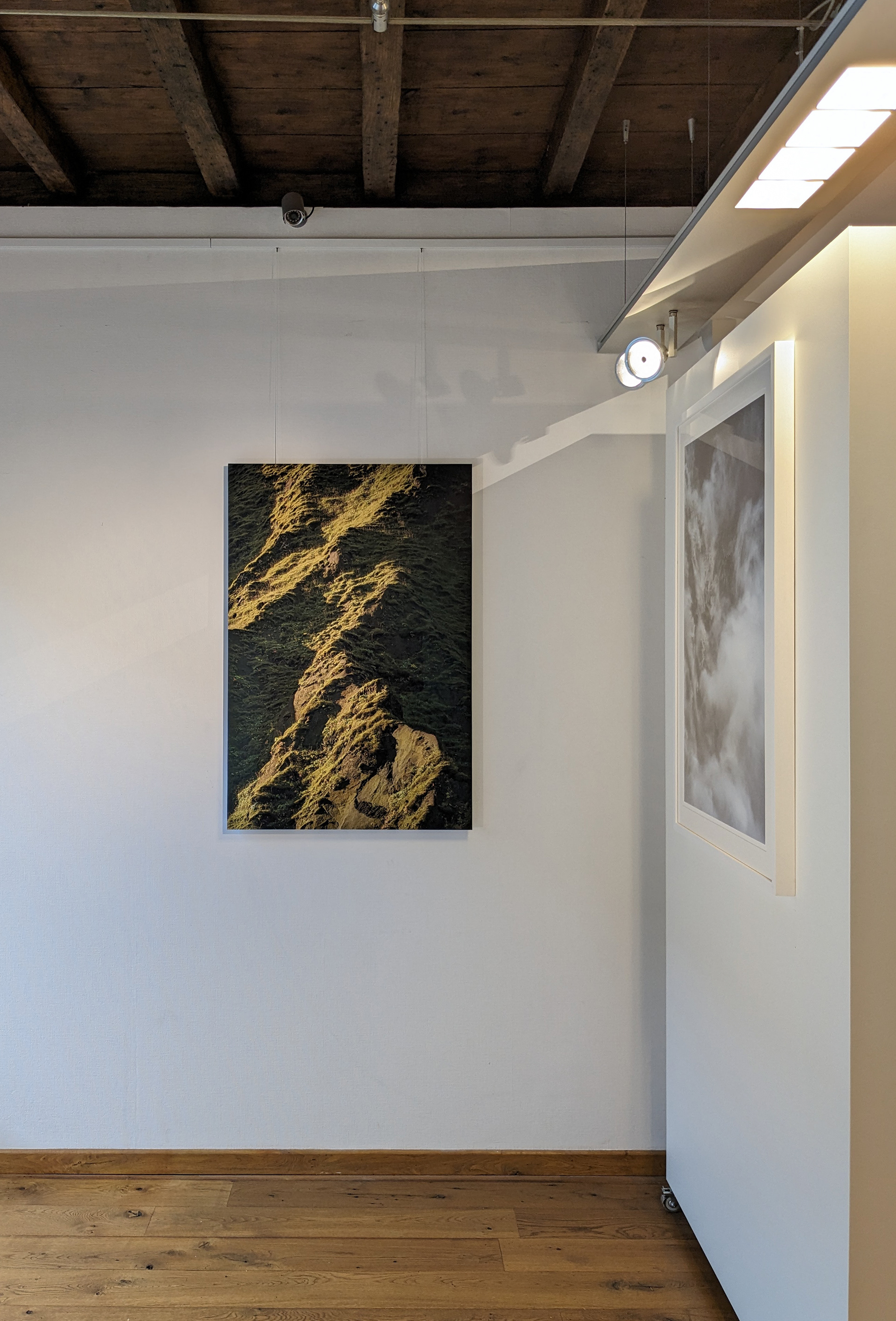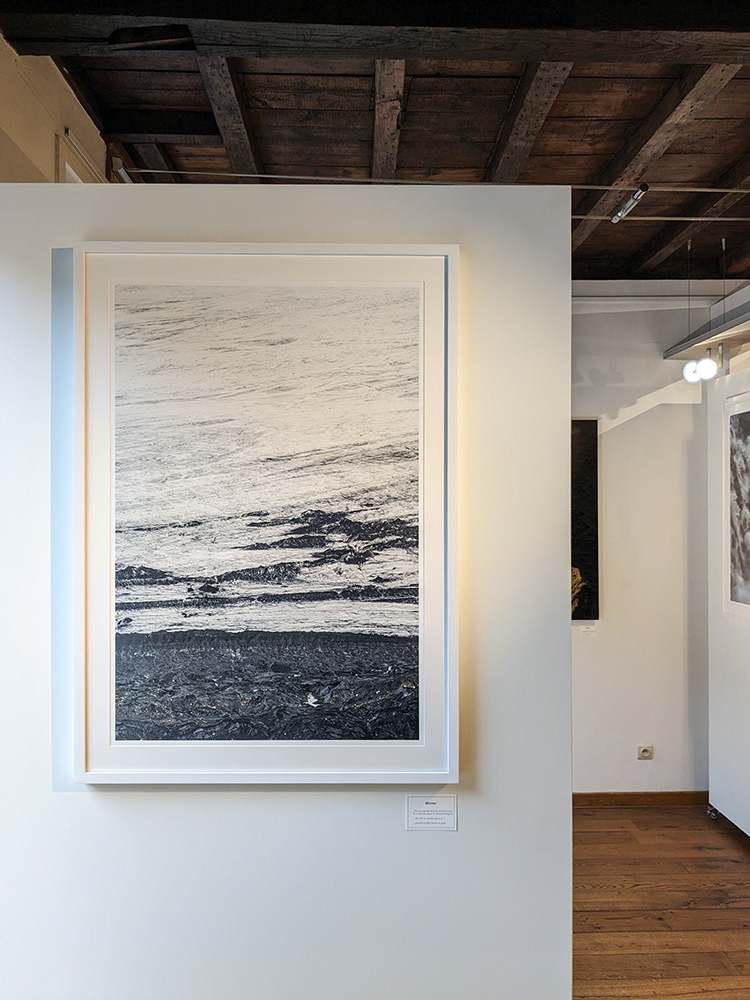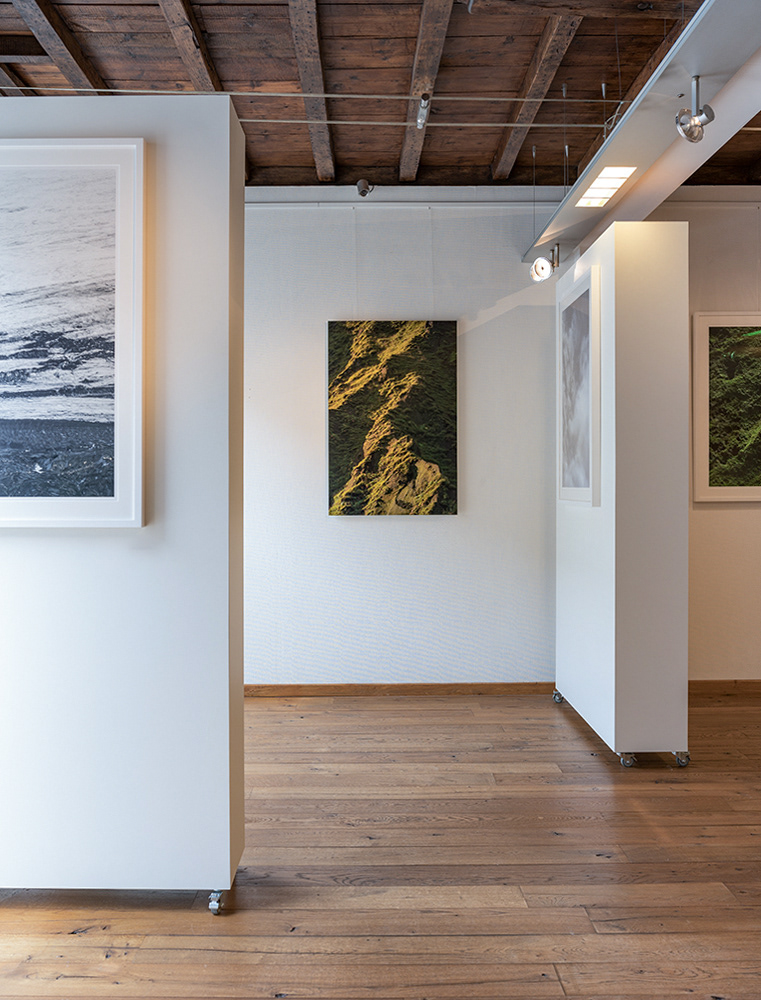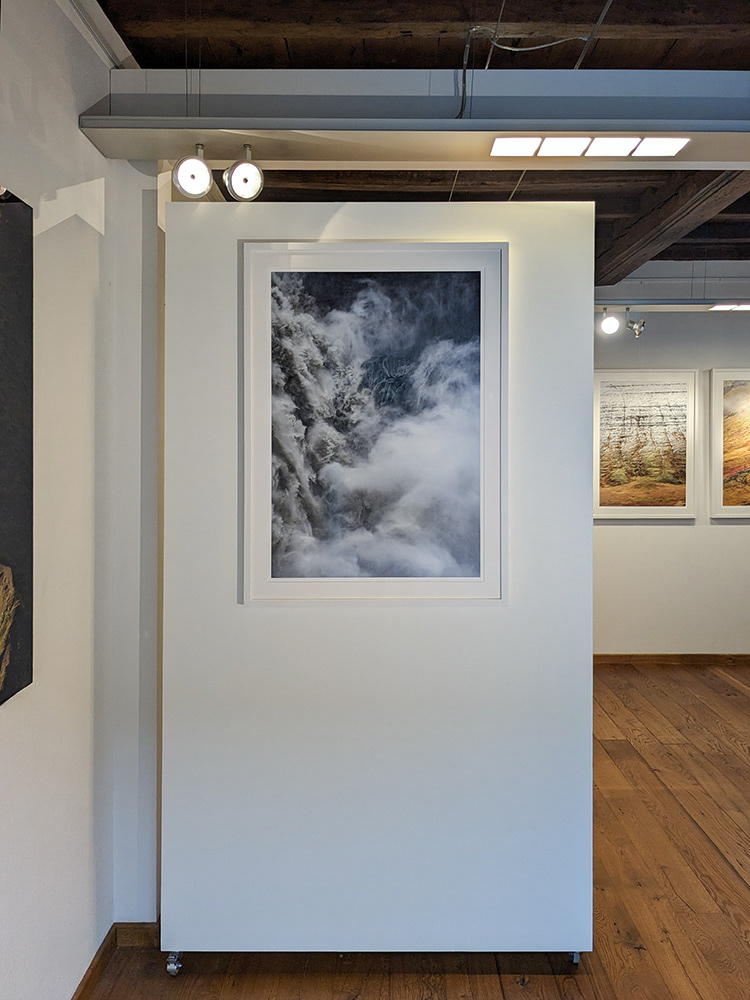Exactly one year after the vernissage of 'Iceland, still', my second solo exhibition, 'Luminous', opened its doors. The images were on display during the whole month of June 2024, and were hosted yet again by art gallery A1, albeit at another location, a little further down the street.
Stately house on the outside, white walls, tan wooden floors, and a ceiling made of dark-stained wooden beams and boards on the inside. A lovely venue.
While 'Iceland, still' featured a collection of still-scapes, vignettes and abstracts, this time, I chose to focus only on the abstracts. They're the most challenging to shoot, and therefore, I suppose, the most gratifying and personal. Fifteen large single edition prints mainly from my 2023 Iceland trip, all in portrait orientation (with a few square ones thrown in), and all but two in white wooden frames and white matts that let the images take center stage.


I have, and will no doubt forever retain, an out-spoken appreciation for pigment ink prints on museum-quality paper stock. The tactile and visual quality of the (different kinds of) paper, the fact that real ink rather than a photo-chemical process is used to form the image, and the longevity of the final product all rate highly in my book.


That being said, a classic wooden frame, even a neutral white one, still makes for a ... well, a classic representation, I suppose. Personally, I love it, but time had come to see what else is out there.


After a rather lengthy period of research, I came upon a framing method that complements the feeling of authenticity and restraint of in images well, and falls in with my love of paper: Trulife Diasec. The process starts with a regular pigment print on my preferred Canson Infinity paper stock, the back of which is then glued to dibond. Finally, a sheet of perspex is layed down and chemically seals the front of the print, using a proprietary process. The result is a contrasty, but very natural-looking image.


In this case (i.e., 'Trulife'), the perspex used is the polymer equivalent of museum glass: it's glossy while being anti-reflective and keeping UV at bay. The aluminum frame glued to the back of the dibond allows for a 'frameless framing', which is a real treat for the eye as the image seems to float in front of the wall. The difference between this and a cheap print directly on glossy, reflective perspex, is night and day. Or so visitors and patrons claimed, upon pressing their noses against the two featured Diasec Trulife frames.
As a result, and as an alternative to my usual frames, I'll also be giving my images the Diasec Trulife treatment upon request.




